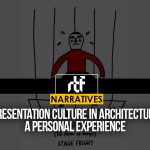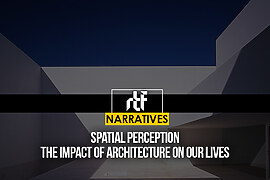The Architecture curriculum is often perceived to be an unruly bully for the students. There’s not the slightest doubt about the teachings imparted and the lessons learnt to be enthralling, but you are sure to enrich your education with certain valued lessons of the field which perhaps, were utterly unanticipated.
The ideas expressed here are what formed the central pivot of my experience of architectural education and emanating these, you are sure to achieve the best results from the daunting five years of college.
Learn to be process-oriented and not product-driven
The one thing an architecture college teaches you extensively is to be patient through the process and take rejections in your stride. Failure is certain and the process is excruciating.
But faith in the process and persistence will make your design grow leaps and bounds with each step, thus making your final design a product of multiple iterations, calculated deliberations and constant experimentations.
The course emphasizes cumulative effort rather than crediting the finished product. You won’t receive instant gratification, but you will surely be rewarded by consistency so don’t forget to keep your eyes on the prize.

You must sell your design
Our perception of the world around us is complex and layered. With every layer, our understanding of it deepens and translates into personal biases and concepts. The most challenging part for an architect is not imagining and implementing these concepts in the design, but presenting it in a way that can attract clients, investors and stakeholders, well in college, the jurors.
To sell a design, you learn to build compelling arguments, refine your communication and most of all, bring clarity of understanding for every aspect of the design. They say that if you manage to sell your design to a non-architect or a family member with absolutely no understanding of the subject, you could sell it to anyone. Also, in the process of selling your design, learn the art of receiving feedback and criticism in a non-defensive way.

Think critically at every step
Architecture is the thoughtful making of a space- Louis.I.Kahn
As an architecture student, the precursor to learning how to design buildings is to learn the art of ‘design thinking’ to solve problems. An architect is an equal thinker as is a philosopher. He deals with various tangible forces that would directly impact lifestyles and human behaviour.
Every piece of architecture encompasses life and therefore it is essential to design spaces judiciously. In college, we were made to learn the art of critical thinking – a process in which at each step, we were made to detach from the project and analyze it as if it weren’t our design.
Graphics help to enhance Architectural communication
After five years of architecture college, I would like to confess that I am a full-time architect and a part-time graphic designer. As a student, we are constantly made to visualize. While trying to convey ideas and making deliverables for the project, we are constantly made to experiment with the various methods of communication best suited for the project.
Clear representation of the design will help you pitch your concepts better and graphics make the task not just easier but offer innumerable possibilities for communication.
My college not just taught me how to design and draw a layout, but also taught me to explore the various tools of communication. Right from sketching on a piece of paper to drawing on AutoCad and other tools to compose the sheets such as Adobe Photoshop, Corel Draw and visualising it in 3D, by the end of the course, we were made perfectly well versed with the various software.
Apart from orthographic drawings, certain widely used methods of communicating designs and concepts are:
- Illustration
A simple illustration makes it easy for the viewer to focus on specific strategies of the project without getting distracted by the multiple layers of a photograph.
- Rendering
The easiest way to make the scale, proportion and materials of a project palatable to an untrained eye is architectural renderings. Setting the correct lighting for the scene, a perfect camera angle and creating a composition of the various objects of the scene could result in a powerful render.
- Presentation
The best way to educate an audience of the multiple forces acting upon a project right from the details of the site, ownership, financial proformas and the legalities is by making a concise and comprehensive presentation using text, charts, tables, infographics and images.
- Walkthrough
Simulating an entire project as seen while walking through the spaces and immersing the user in an interactive experience is possible using an architectural walkthrough. The viewer can see the building in its finest form and convey a precise narrative of a building and its context.
Read and research regularly
Trends are rapidly changing. The best and the most undervalued means of keeping up with these changing trends is to research regularly and sustain your interest in the developments and modifications of the field.
There’s a certain pattern to these trends and it is important to root your education into the history of the subject by reading about the timeless wisdom trapped in the various books written by industry stalwarts. Why deprive yourself of the priceless experiences of the people who have already tread the paths once uncharted?
The best way to ensure this is to make a ritual of visiting the college library on particular days of the week and spending some time there alone or with a group of friends. The books have a lot to tell but very few learn to receive.
I am delighted to say that perhaps there is no other profession that requires its student to assimilate the knowledge of various fields from history, art, sociology, physics, psychology, materiality, symbology and create a piece that is sound structurally, mechanically, functionally and at the same time enriching the life in it.
If you’re in the field of architecture, embrace the long haul because every lesson learnt is worth it!



















